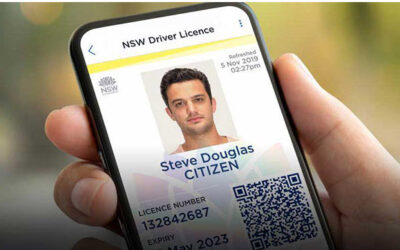While certainly the most important reason for proper identification in medical patient registration is for the health of the patient, it’s also important to ensure that the patient is eligible for the services they are requesting and that their insurance company or other provider is agreeing to pay for the service. In addition to supporting the Hippocratic Oath, medical companies are also businesses and, like any other business, need to ensure that they can be paid for their services, or they won’t be able to stay in business.
That’s why collecting and retaining correct and complete medical patient registration information is so critical.
“On average, respondents say that 35% of all denied claims result directly from inaccurate patient identification or inaccurate/incomplete patient information, costing the average healthcare facility $1.2 million per year,” according to the Ponemon survey “2016 National Patient Misidentification Report,” cited by The American Health Information Management Association.
Why inadequate medical patient registration identification is a problem
With the increasing cost of healthcare services in the United States, as well as more care when prescribing treatments such as narcotics, it is more important than ever to ensure that patients both are who they say they are, and have coverage for the care that they’ll be getting.
And unfortunately, just having insurance information isn’t enough. Data such as health insurance policy numbers is increasingly available for sale in places such as the so-called “dark web” on the Internet. Someone might come into a medical provider’s office with stolen insurance information, or even an actual stolen or manufactured insurance card, in an attempt to obtain medical treatment fraudulently, or to gain access to narcotics.
That’s why it’s important to also see a physical government identification card from the patient, both to cross-match the patient’s identity with that on the insurance card, and to make sure the patient actually is who they say they are.
The challenge of obtaining and recording medical patient insurance information
Patients coming to a medical provider aren’t always in their best frame of mind. They may be sick or in pain. They may be concerned about a loved one. They may be worried about how they’re going to pay for all this.
That’s why the best way to collect medical patient registration is from the insurance card itself. It not only has information about the patient, but about the patient’s insurance plans: the exact company name, policy number, plan type, deductibles, co-payment, and so on. Having that information from the beginning, and correctly, makes it easier for the medical provider to perform patient eligibility verification, and makes it more likely that the medical provider will get paid for their services the first time, and without delays caused by claim rejections due to incorrect or inadequate information. For this reason, many medical provider offices will provide services only if the patient is able to present a physical insurance card.
Getting medical patient registration insurance verification ahead of time can also mean that the patient will be treated faster. If the medical provider needs to obtain prior authorization from the insurance company before deciding upon and starting treatment, having this information means the medical provider’s office can start getting that prior authorization that much sooner.
“Insurance verification confirms your patient’s coverage and benefits, whereas insurance authorization gives you a green light to provide certain services,” summarizes Business News Daily.
Ideally, medical provider offices can record the data directly from the insurance card itself, without having to re-enter the data manually. Not only does re-entering the data take more time, but it’s more likely to introduce errors in the process.
Another advantage of recording medical patient registration information directly from the insurance card? It means the patient doesn’t need to say the information out loud, which reduces the chance of identity theft.
How the cloud keeps medical patient insurance information safe
Like patient name, date of birth, and so on, health insurance information is also considered to be Protected Health Information (PHI) under the United States Health Insurance Portability and Accountability Act (HIPAA). As such, all health insurance providers are required to protect such information.
Aside from the law, there’s other reasons to protect information about a patient’s health insurance. For cases that go on beyond a single visit, medical providers may need to refer to a patient’s insurance information. Even in cases solved by a single visit, the medical provider may need to go back to a patient’s record if there’s an issue with covering the medical treatment.
And unfortunately, things happen. A medical provider who manages their own data and keeps that data on-site could be asking for trouble. For example, an office server could be taken out by something as common as a brownout or a lightning strike. Moreover, because they contain so much PHI, medical providers are a prime target for ransomware and other attacks by hackers, putting all patient data at risk. In fact, the Federal Bureau of Investigation recently warned that some ransomware specifically targets healthcare organizations.
“At least 13 U.S. healthcare systems with 59 hospitals between them have been hit by ransomware in 2022, according to Emsisoft threat analyst Brett Callow,” writes The Register. “And, of course, unless the providers pay, the data also gets released on the dark web where it can be easily accessed by yet more cybercrims,” Callow added. “Unfortunately, ransomware is a problem that doesn’t seem to be going away.”
Finally, keeping a complete copy of the information on the patient’s insurance card in the patient’s record in the cloud means that the next time the patient comes in no matter how far in the future that may be, even if the office has moved in the meantime the medical provider office can perform patient eligibility verification and prior authorization more quickly perhaps even before the patient arrives for their next appointment. That not only improves cash flow for the medical provider, but leads to improved patient satisfaction as well.
Interested in learning how optical character recognition can help your business protect itself by using physical identification documents? For a free trial of our API or software, please email us at [email protected].




